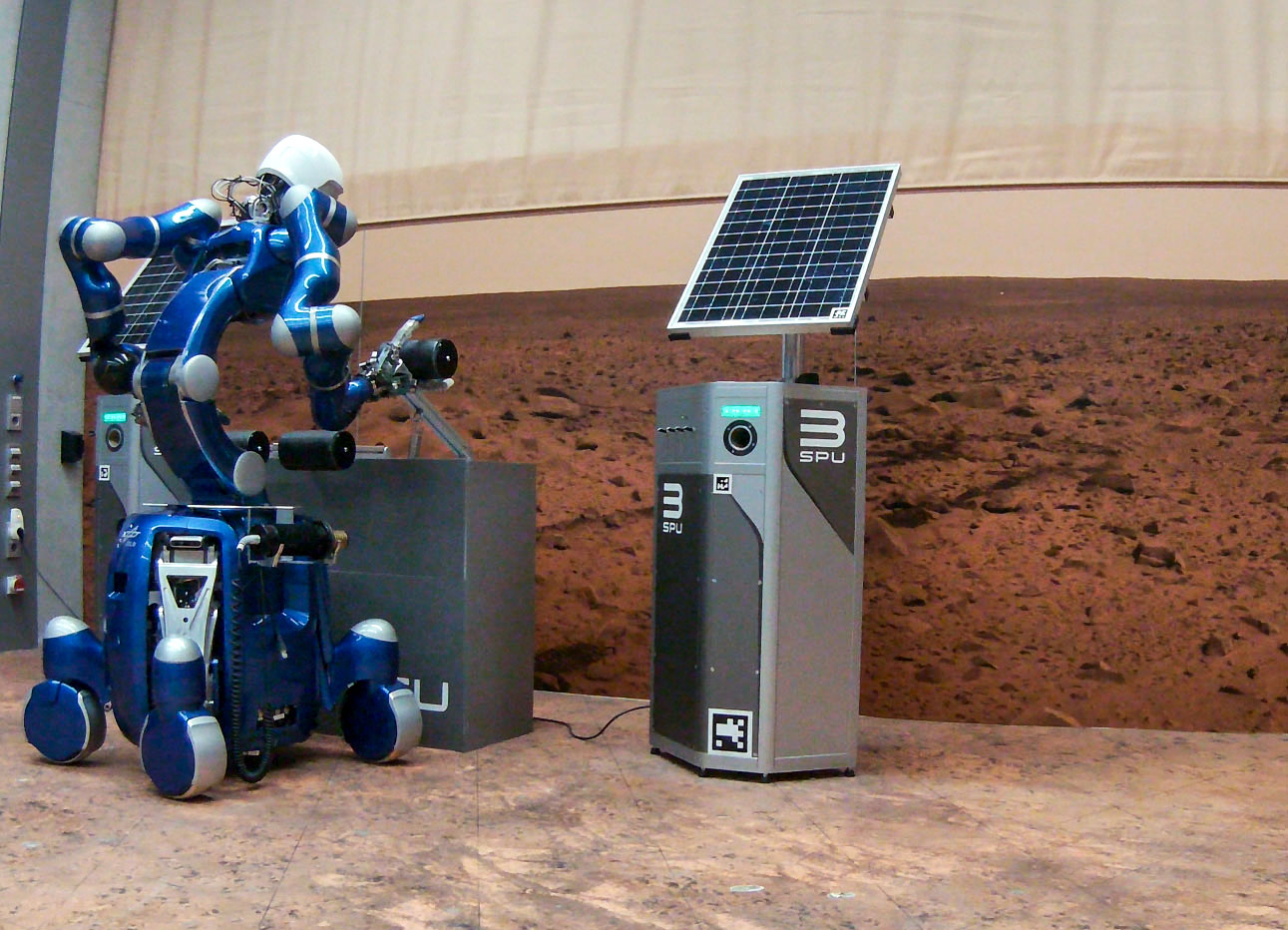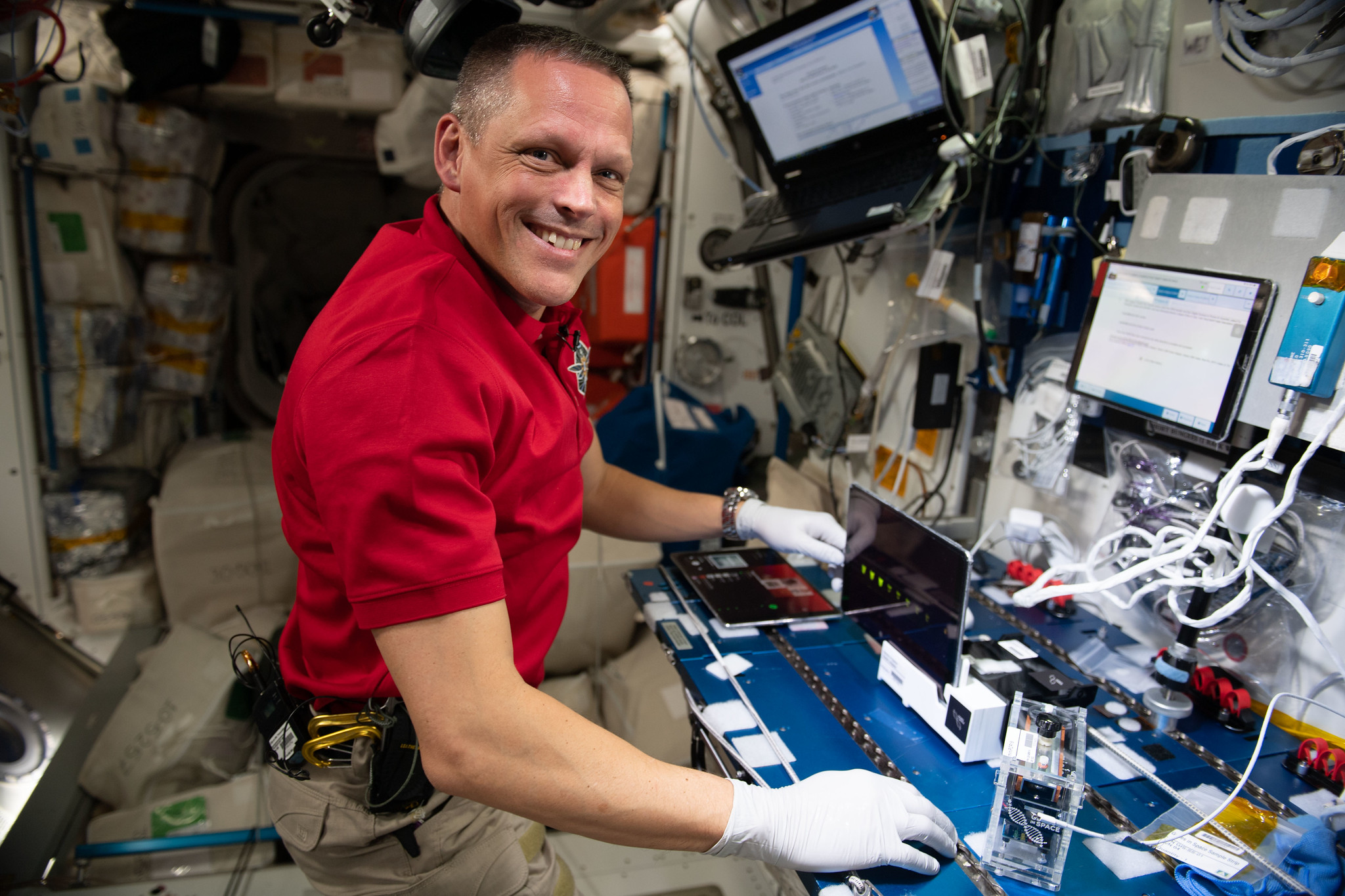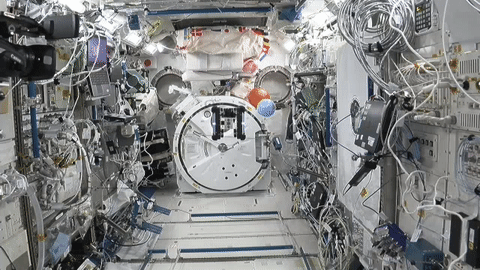Crew members aboard the International Space Station conducted scientific investigations during the week of Aug 1 that included controlling space station robots with code written by students, using a container-free system to examine formation of amyloid fibrils, and evaluating orbit-to-ground control systems for multiple robots.
Here are details on some of the microgravity investigations currently taking place aboard the orbiting lab:
Fly my code
For Astrobee-Zero Robotics, students write software to control one of the space station’s Astrobee free-flying robots. A Massachusetts Institute of Technology team leads an online simulation competition that allows students to learn coding without directly interacting with the station robots. Finalists selected through the competition have their code downloaded to the Astrobee platform and observe its performance. The experience inspires the next generation of scientists, engineers, and explorers and promotes teamwork, computer literacy, and awareness of opportunities for space-related careers. Zero Robotics also advances understanding of artificial intelligence, systems engineering, and human-robot collaboration. This and other student programs help prepare young people for careers on Earth. Crew members conducted the final runs of the program during the week.
No container needed
The Ring Sheared Drop investigation examines formation of amyloid fibrils using a device that holds liquids together by surface tension rather than a container, which can affect scientific results. Amyloid fibrils form a waxy plaque in the brain and may be involved in development of some neurological diseases. Investigation results may contribute to a better understanding of these diseases and development of potential treatments. This ability to process materials without containers in microgravity could benefit other experiments, including those that grow protein crystals and microorganisms and research on pharmaceuticals. During the week, crew members set up the experiment in preparation for science operations.
Running the robots
Surface Avatar, an investigation from ESA (European Space Agency), evaluates a system for orbit-to-ground command of multiple autonomous robots. Using telerobotic systems for exploration and infrastructure development on other solar system bodies could reduce the need for time-consuming and potentially risky human-based extravehicular activities. Such systems are expected to be integral to the lunar Gateway mission. Effective command of these systems from orbit is essential, though, and this investigation could support development of effective orbit-to-ground operations as well as provide insight into the most suitable control regimes for future sample return missions from Mars and asteroids. Some of the technologies also have applications on the ground, such as a humanoid robot from the German Aerospace Center (DLR) deployed as a household assistant for senior citizens. Crew members conducted operations during the week.

Other investigations involving the crew:
- PGTIDE studies the effectiveness of stain removal ingredients and whether these detergent formulations undergo changes in physical appearance, stability, or performance in microgravity. Results could support development of systems for laundering crew clothing on future missions to the Moon and Mars.
- ANITA-2 from ESA tests a compact device that can analyze and quantify trace contaminants in the space station’s atmosphere and detect the presence of unknown substances. Atmospheric monitoring is an essential function for human exploration systems, and this technology also can be applied in monitoring of air quality in closed environments on Earth.
- Genes in Space-9 evaluates a technology that does not include living cells to synthesize proteins for use in microgravity. This technology could provide a portable, low-cost tool for medical diagnostics, on-demand production of medicine and vaccines, and environmental monitoring on future space missions.
- Space Fibers-3 evaluates methods for producing fiber optic cable in space. Previous studies showed improved properties in fiber drawn in microgravity compared to that fabricated on the ground, and a higher quality product could improve applications on Earth such as imaging, remote sensing, and next-generation optical communications.
- Fiber Optic Production-2 builds on previous work to develop the technology for manufacturing commercial optical fibers in microgravity. These fibers are difficult to manufacture on Earth due to gravity-induced crystallization and other factors. This investigation could help guide manufacture of optical fiber aboard the space station for commercial use.
- NutrISS, an investigation from ESA (European Space Agency), assesses body composition and energy balance using wearable sensors. Results could lead to improved physical health and quality of life for astronauts and better clinical management of malnourished, obese, or immobilized patients on Earth.
- Thermal Amine Scrubber tests a method to remove carbon dioxide from air inside the space station. This could help protect crew members and people working in closed environments on Earth from adverse symptoms of carbon dioxide buildup.
- MISSE-16 tests a fabric with imbedded sensors, 3D printed polymers, dried microbes, paraffin wax thermal protection, thin solar cells, and other materials in the harsh environment of space. The samples could help improve equipment and systems for future space exploration.
- SERFE investigates the effect of contamination and corrosion on a spacesuit thermal control system and how microgravity affects the system’s ability to regulate astronaut body temperature under various conditions. Results could support development of spacesuits for future exploration missions and contribute to improvements in technology using evaporation for cooling on Earth.
The space station, a robust microgravity laboratory with a multitude of specialized research facilities and tools, has supported many scientific breakthroughs from investigations spanning every major scientific discipline. The ISS Benefits for Humanity 2022 publication details the expanding universe of results realized from more than 20 years of experiments conducted on the station. Access the publication and related materials online.
For daily updates, follow @ISS_Research, Space Station Research and Technology News, or our Facebook. Follow ISS National Lab for information on its sponsored investigations. For opportunities to see the space station pass over your town, check out Spot the Station.
John Love, ISS Research Planning Integration Scientist
Expedition 67






























